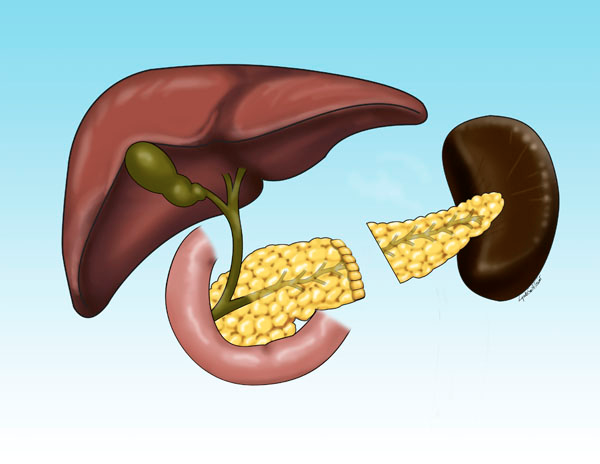Distal Pancreatectomy
A distal pancreatectomy is usually performed when a patient has a tumour in the body or tail (‘thin end’) of the pancreas.
This procedure involves having the tail (thin end) and body of your pancreas removed, leaving the head of the pancreas intact. Your surgeon will normally remove your spleen at the same time because it is located next to the tail of the pancreas.
Even though a distal pancreatectomy is less complicated than the Whipple’s procedure, it is still major surgery. The spleen is an important part of your immune system, and if it is removed, you will be on antibiotics for the rest of your life to prevent infections.
Some specialists may opt to perform distal pancreatectomies via a laparoscopic procedure. This is not common, it only happens in a few specialist centres and generally only when the tumour is small. As it is keyhole surgery, recovery time for patients is usually faster than for open surgery.
In medicine, a pancreatectomy is the surgical removal of all or part of the pancreas. Several types of pancreatectomy exist, including pancreaticoduodenectomy (Whipple procedure), distal pancreatectomy, segmental pancreatectomy, and total pancreatectomy.
Open distal pancreatectomy and splenectomy. In this procedure the body and tail of the pancreas is removed with the spleen. The spleen is removed with the pancreas since the blood supply to the spleen is intimately associated with the pancreas.

